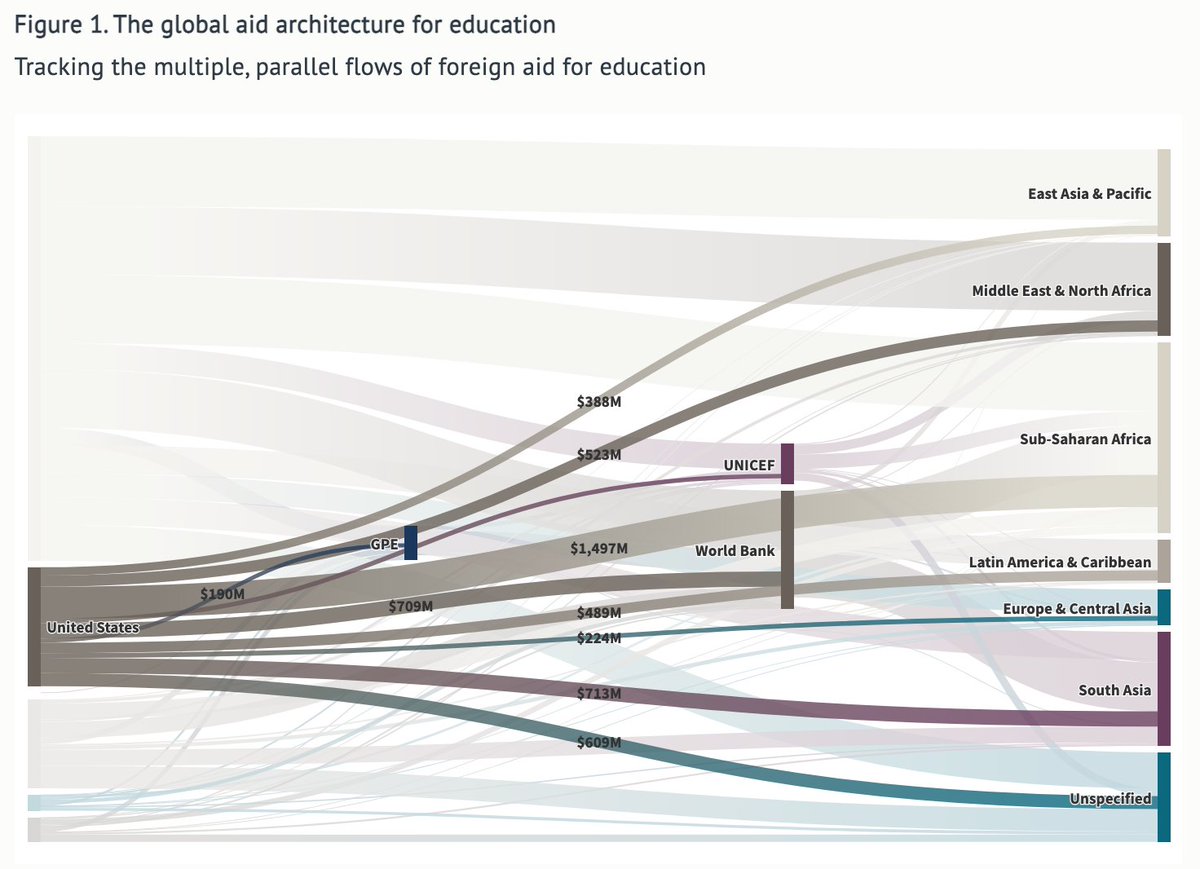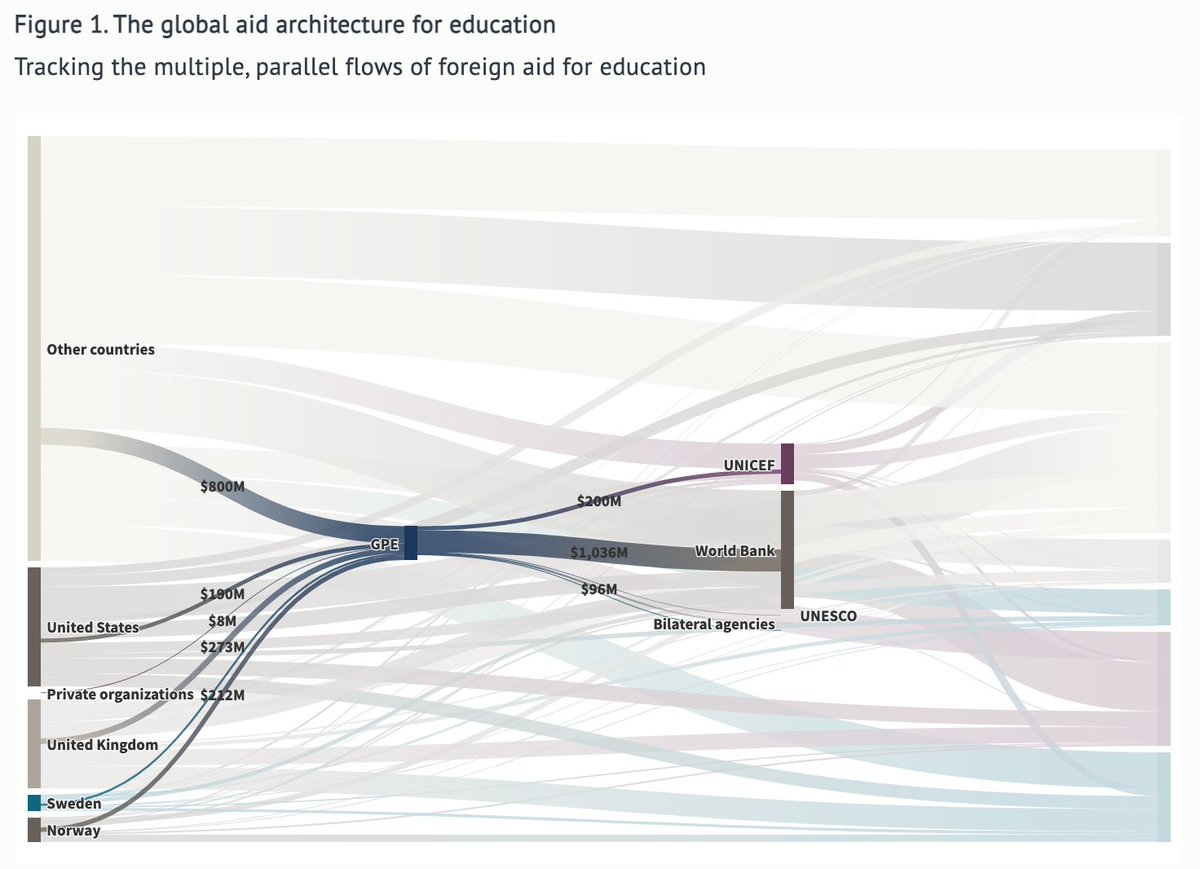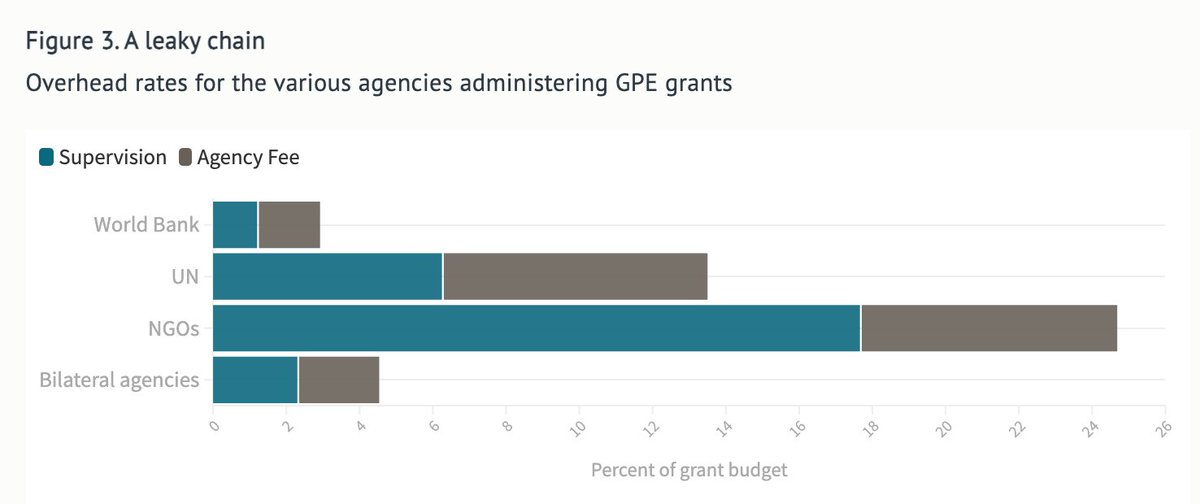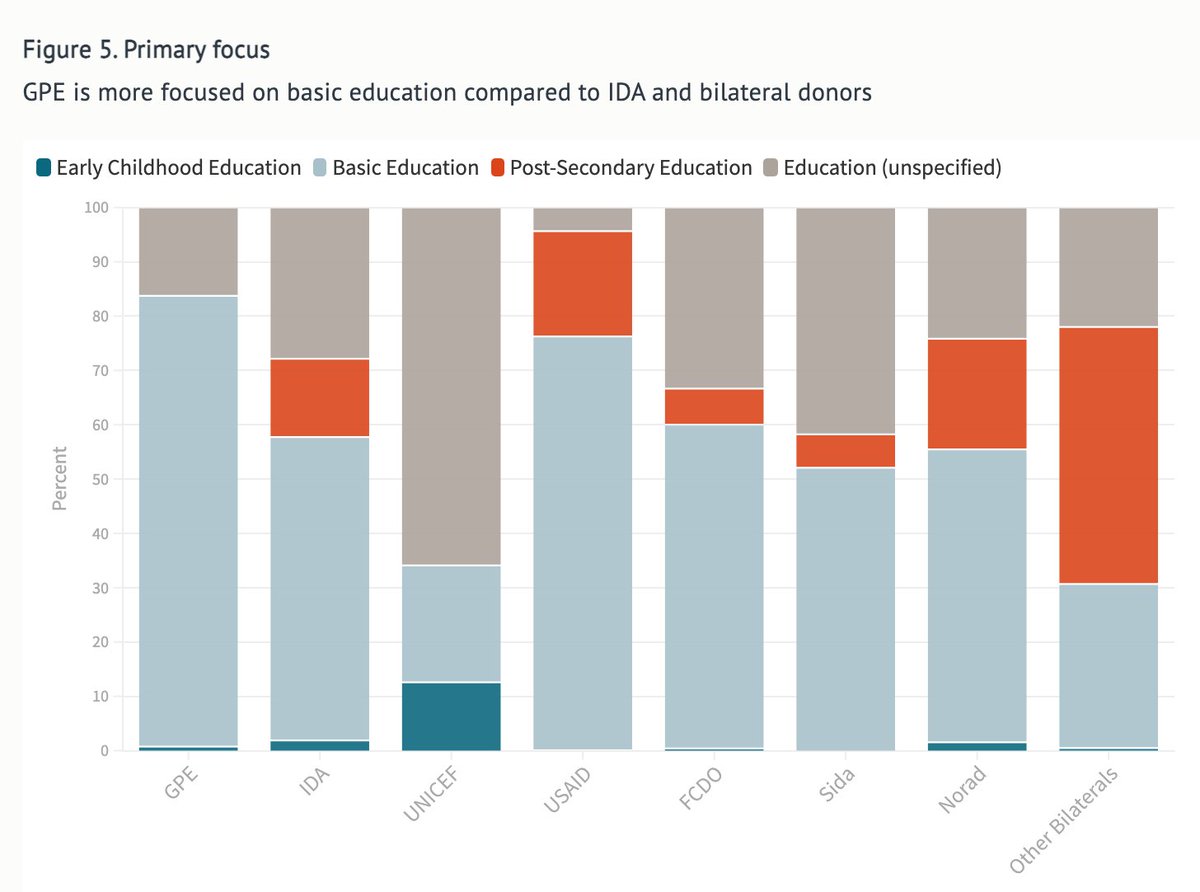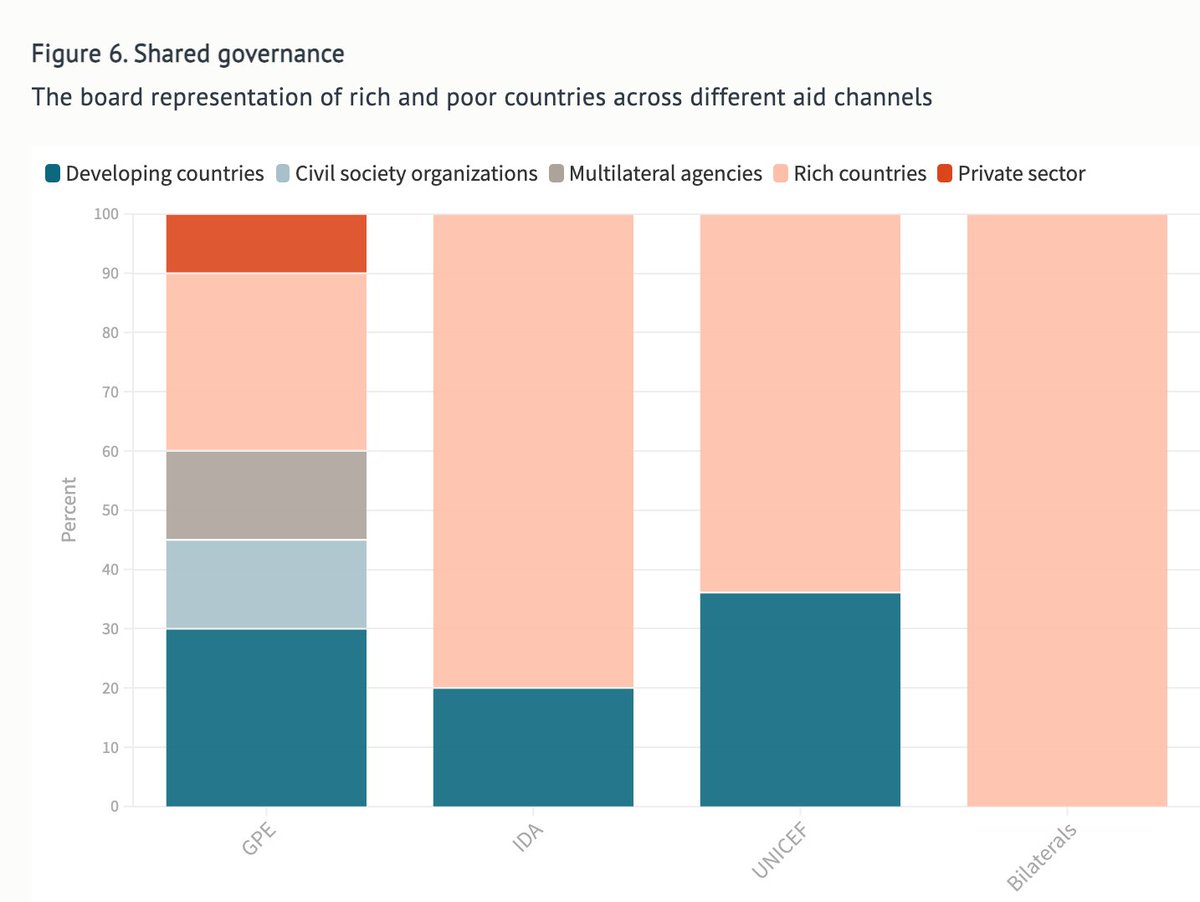New CGD note:
Is the Global Partnership for Education redundant?
(Or is it a more progressive, democratic alternative to the World Bank?)
https://www.cgdev.org/publication/global-partnership-education-redundant
1/
Is the Global Partnership for Education redundant?
(Or is it a more progressive, democratic alternative to the World Bank?)
https://www.cgdev.org/publication/global-partnership-education-redundant
1/
GPE is basically a pooled fund that tops up the education budgets in relatively poor countries. It's a small player in the multilateral aid world, but is currently trying to raise $5 billion (not nothing).
So...should donors pony up?
2/
So...should donors pony up?
2/
One concern is duplication of efforts.
The US, for instance, gives education aid to Malawi at least 3 ways:
1. US => Malawi
2. US => World Bank => Malawi
3. US => GPE => World Bank => Malawi
Surely removing the middle-man is a good idea, no?
3/
The US, for instance, gives education aid to Malawi at least 3 ways:
1. US => Malawi
2. US => World Bank => Malawi
3. US => GPE => World Bank => Malawi
Surely removing the middle-man is a good idea, no?
3/
Maybe / maybe not.
There's good reason GPE gives almost all its money to the World Bank to administer. The Bank, unlike GPE, has a global footprint, and can administer additional programs pretty cheaply.
4/
There's good reason GPE gives almost all its money to the World Bank to administer. The Bank, unlike GPE, has a global footprint, and can administer additional programs pretty cheaply.
4/
Still a dollar put into GPE versus a dollar put into the World Bank or USAID are actually very different.
5/
5/
First, GPE spends more of its education money in the poorest countries.
Roughly 2/3, compared to less than 40% for USAID, 1/3 for the World Bank's IDA, and barely 1/4 for the UK's FCDO.
6/
Roughly 2/3, compared to less than 40% for USAID, 1/3 for the World Bank's IDA, and barely 1/4 for the UK's FCDO.
6/
Second, GPE spends more of its education money on basic education. Many bilateral donors' "education aid" is really discounted tuition for foreign students. (Which, fine. Just a different thing.)
7/
7/
Third, governance matters. If you think developing countries and civil society should have some sway over how aid is used, GPE has real benefits.
The World Bank, by contrast, is a rich country club.
8/
The World Bank, by contrast, is a rich country club.
8/
In sum, as donors ponder whether to give GPE $5 billion, it's probably helpful not to think of this as "why do we need this parallel structure?" and more as "what's the right way to allocate and govern international aid for education?"
GPE looks pretty good on that score.
9/9
GPE looks pretty good on that score.
9/9

 Read on Twitter
Read on Twitter